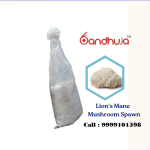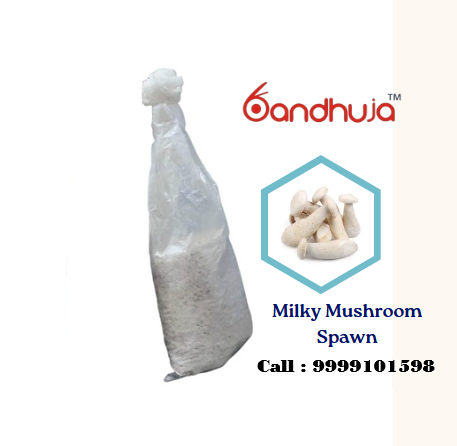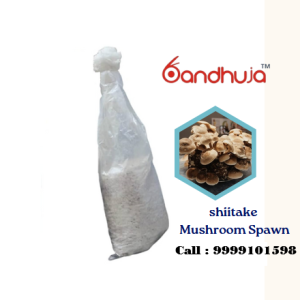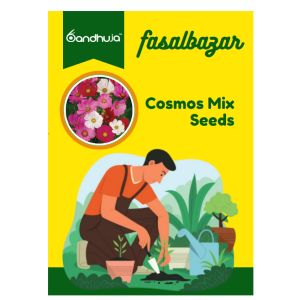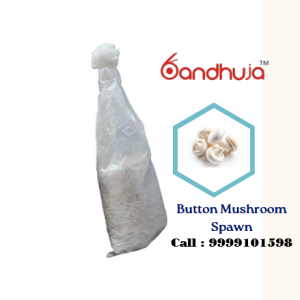Description
Milky mushroom farming, involving the cultivation of Calocybe indica, is an emerging and promising agricultural practice, particularly in tropical and subtropical regions. Known for its creamy white color and delicate flavor, milky mushrooms are gaining popularity due to their nutritional value and culinary versatility. Here’s a comprehensive overview of milky mushroom farming:
1. Growing Conditions
Milky mushrooms thrive in specific environmental conditions, which include:
Temperature: The ideal temperature for growing milky mushrooms ranges from 70°F to 85°F (21°C to 29°C). They prefer warmer conditions compared to many other mushroom varieties.
Humidity: High humidity levels (around 85-90%) are crucial for optimal growth. Maintaining humidity helps prevent the mushrooms from drying out and promotes healthy fruiting.
Light: Milky mushrooms require low light conditions. They do not need direct sunlight, and indirect light is sufficient for their growth.
2. Substrate Preparation
Milky mushrooms can be cultivated on various substrates, with the following being the most common:
Agricultural Byproducts: Common substrates include paddy straw, wheat straw, and sugarcane bagasse. These materials are often readily available and cost-effective.
Composted Materials: The substrate can be enriched with nutrients through composting, which helps improve yield and quality.
The substrate must be properly prepared and pasteurized to eliminate contaminants before inoculation.
3. Spawn Inoculation
Mushroom spawn, which contains the mycelium of the milky mushroom, is used to inoculate the prepared substrate. This process is typically done in a clean environment to minimize contamination. The spawn is mixed thoroughly with the substrate and placed in bags or containers.
4. Colonization
After inoculation, the substrate is placed in a dark, warm environment to allow the mycelium to colonize. This process usually takes about 10 to 14 days, depending on the substrate and environmental conditions. During this time, the mycelium spreads throughout the substrate, breaking it down and preparing for fruiting.
5. Fruiting
Once the substrate is fully colonized, conditions are adjusted to initiate fruiting:
Temperature: Slightly lower temperatures may be introduced, typically around 70°F to 80°F (21°C to 27°C).
Humidity: Humidity levels should be maintained or increased to promote healthy growth.
Fresh Air: Adequate ventilation is crucial to prevent carbon dioxide buildup and encourage the development of fruiting bodies.
After a few days, small mushroom pins will begin to form, eventually developing into mature milky mushrooms.
6. Harvesting
Milky mushrooms are typically harvested when the caps are fully expanded and before they begin to flatten out. Harvesting is done by twisting or cutting the mushrooms at the base to avoid damaging the surrounding mycelium, allowing for subsequent flushes.
7. Post-Harvest Handling
After harvesting, mushrooms should be cleaned and packaged carefully to maintain freshness. They are best stored in cool, humid conditions and can be sold fresh or processed. Proper handling is essential to prevent bruising and spoilage.
8. Challenges in Milky Mushroom Farming
Pest and Disease Management: Common pests include insects and molds. Implementing good hygiene and pest management practices is essential.
Market Demand: Understanding local market trends and consumer preferences can help farmers maximize sales.
Environmental Control: Maintaining optimal growing conditions can be challenging, especially in fluctuating climates.
9. Economic Viability
Milky mushroom farming can be a profitable venture due to the growing demand for fresh mushrooms, particularly in regions where they are less commonly cultivated. With relatively low startup costs and the ability to grow on various substrates, it offers opportunities for both small-scale and commercial farmers. The unique culinary appeal and nutritional benefits of milky mushrooms can also command higher prices in the market.
Conclusion
Milky mushroom farming is a sustainable and rewarding agricultural practice that can be pursued by both beginners and experienced growers. With the right techniques, knowledge, and attention to detail, farmers can successfully cultivate milky mushrooms and tap into a growing market, contributing to both their income and the availability of this nutritious and delicious mushroom variety.

